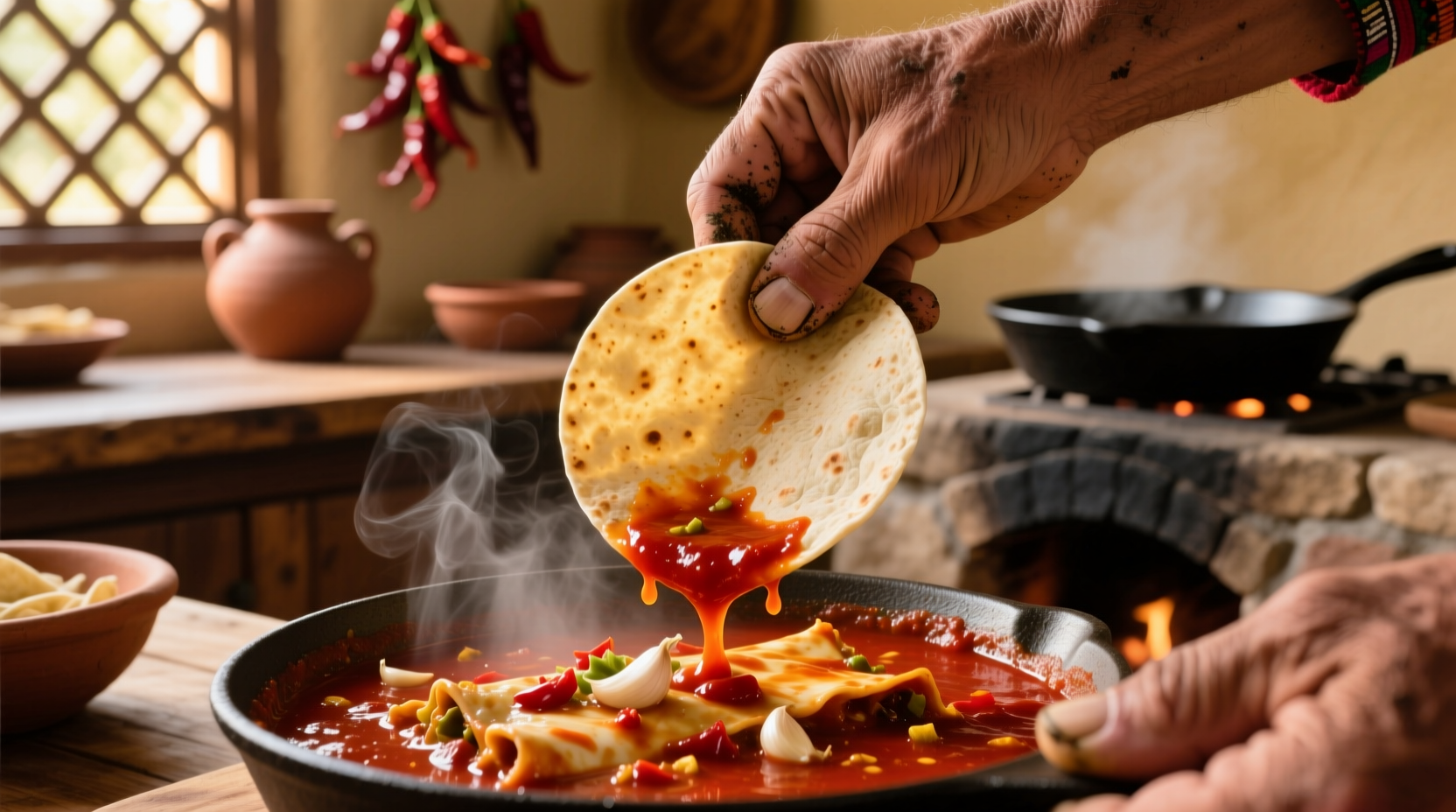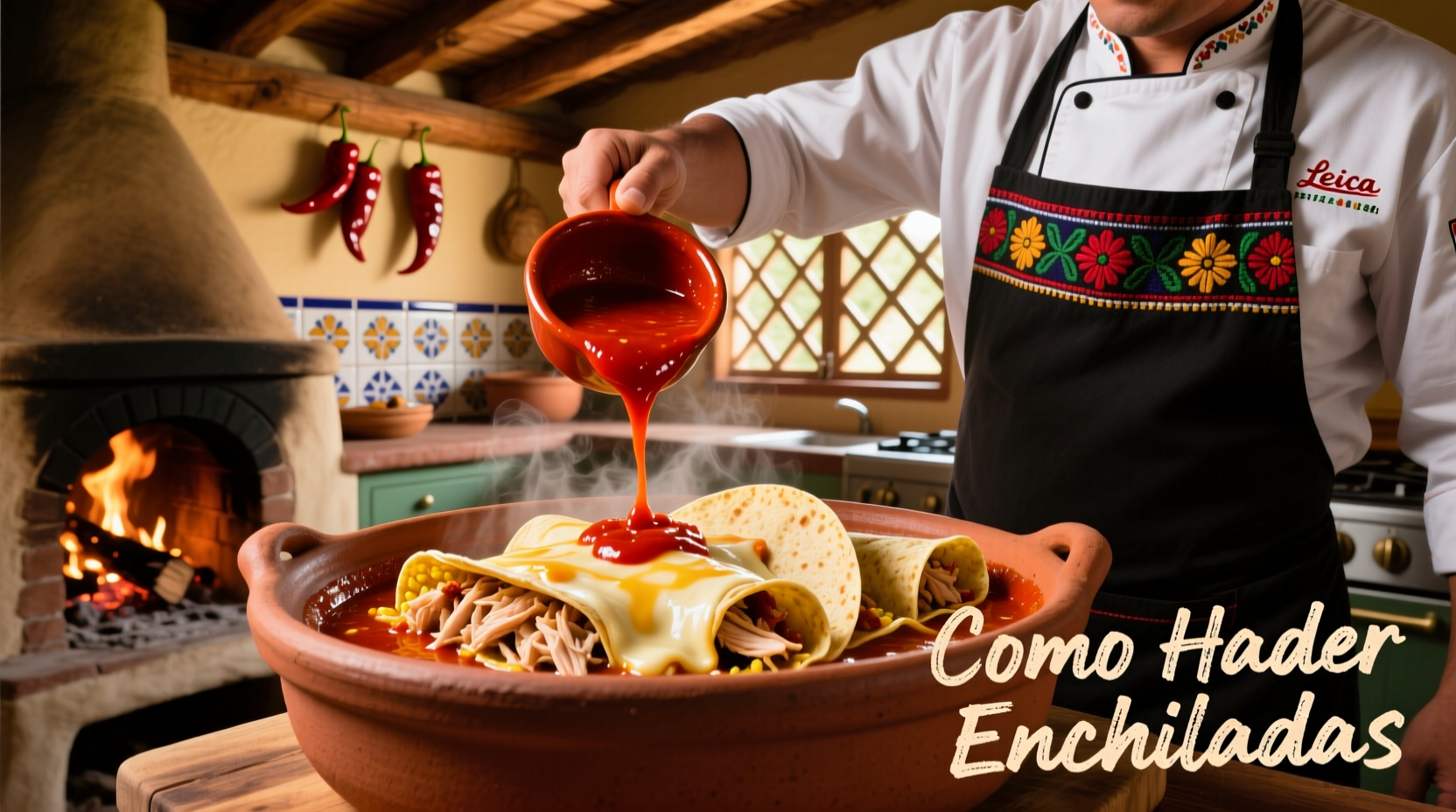Enchiladas represent one of Mexico's most beloved culinary traditions, with regional variations spanning from Oaxaca to Chihuahua. This guide provides the essential knowledge and techniques needed to create authentic, restaurant-quality enchiladas in your home kitchen. Forget the soggy, bland versions you've encountered before—these methods ensure perfectly balanced flavors and ideal texture.
Essential Equipment Checklist
Professional results start with the right tools. While you don't need specialized equipment, these items significantly improve your enchilada experience:
- Cast iron or non-stick skillet (for tortilla softening)
- Shallow baking dish (9x13 inch for standard batches)
- Slotted tortilla holder (taco holder works perfectly)
- Whisk for smooth sauce consistency
- Meat thermometer (for properly cooked fillings)
Ingredient Selection Guide
The quality of your ingredients directly impacts your final dish. Traditional Mexican cooking emphasizes fresh, quality components:
| Ingredient | Quality Indicator | Substitution Consideration |
|---|---|---|
| Corn tortillas | Freshly made, flexible when warm | Flour tortillas change texture and authenticity |
| Chili peppers | Vibrant color, firm texture | Dried varieties often provide deeper flavor than canned |
| Cheese | Freshly grated, not pre-shredded | Pre-shredded contains anti-caking agents affecting melt |
According to research from the National Institute of Anthropology and History in Mexico, traditional enchiladas used only locally available ingredients before Spanish influence introduced dairy products. This historical context explains why cheese is considered a modern addition in authentic preparation.
Perfect Sauce Preparation
The sauce makes or breaks enchiladas. Authentic Mexican cooks emphasize proper sauce consistency—thick enough to coat the tortillas but thin enough to absorb without becoming soggy. For red enchilada sauce:
- Dry roast 4-6 dried guajillo chilies until fragrant (about 30 seconds per side)
- Remove stems and seeds, then soak in hot water for 15 minutes
- Blend with 1/2 cup broth, 1 clove garlic, and 1/4 onion until smooth
- Strain through fine mesh sieve for silky texture
- Cook in skillet with 2 tbsp oil for 5 minutes to develop flavor
The USDA Food Safety and Inspection Service recommends cooking sauces to at least 165°F (74°C) to ensure food safety when incorporating meat fillings, which aligns perfectly with traditional Mexican cooking methods that involve thorough sauce cooking.
Tortilla Preparation Technique

Proper tortilla preparation prevents the most common enchilada failure—soggy texture. Follow this professional method:
- Heat oil in skillet to 350°F (175°C)
- Dip each tortilla for 10-15 seconds per side
- Drain briefly on paper towels
- Immediately fill and roll while warm
This quick oil dip creates a protective barrier that prevents sauce absorption while maintaining pliability. As Maya Gonzalez explains in her field research across Mexico, "The oil barrier technique developed in central Mexico specifically to address the challenge of sauce saturation while preserving the delicate corn flavor."
Assembly Process for Perfect Results
Follow this sequence for restaurant-quality enchiladas:
- Cover baking dish bottom with thin layer of sauce
- Dip tortilla in warm sauce (not oil if using pre-dipped method)
- Add 2-3 tbsp filling near center of tortilla
- Roll tightly and place seam-side down in dish
- Cover completely with remaining sauce
- Add cheese and bake at 350°F (175°C) for 20-25 minutes
Troubleshooting Common Problems
Even experienced cooks encounter these issues. Here's how to fix them:
- Soggy enchiladas: Tortillas weren't properly treated with oil barrier or sauce was too thin
- Dry filling: Overcooked protein or insufficient sauce coverage
- Sauce separation: Not enough fat content or improper blending technique
- Tortillas breaking: Too cold when rolling or insufficient softening
Regional Variations Worth Exploring
Mexico's diverse regions offer distinct enchilada styles:
- Oaxacan: Features mole negro sauce with complex spice blend
- Veracruz: Includes seafood and tomato-based sauce
- Chihuahua: Uses red chili sauce with unique regional chilies
- Yucatan: Incorporates achiote paste for distinctive color and flavor
When adapting regional variations, remember that authentic Mexican cooking respects ingredient seasonality. As documented by the University of Texas's Mexican Foodways Project, traditional cooks adjust recipes based on what's locally available rather than forcing unavailable ingredients.











 浙公网安备
33010002000092号
浙公网安备
33010002000092号 浙B2-20120091-4
浙B2-20120091-4